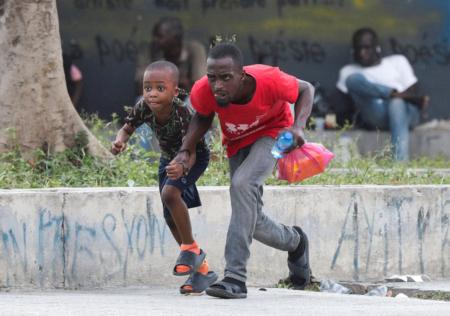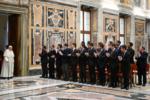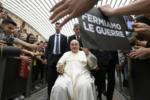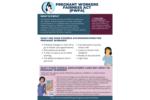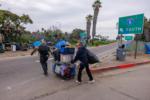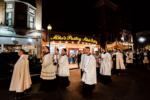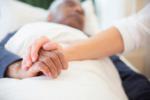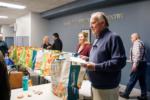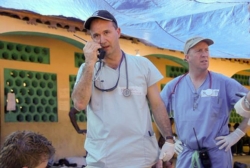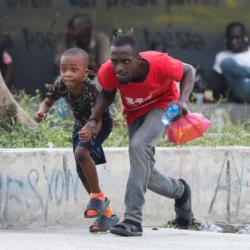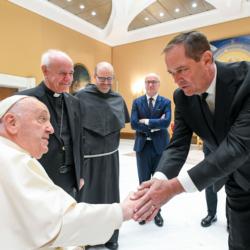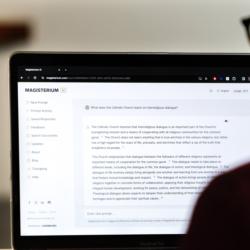‘It was like trying to hold up a waterfall’
BRAINTREE -- Medical personnel from Boston’s Caritas Christi network of hospitals who travelled to Haiti to help treat victims of last month’s earthquake say the experience is one they will not soon forget.
“It was like trying to hold up a waterfall,” said Matt Casey, a physicians’ assistant at Carney Hospital. “There was such a massive need and such an influx of patients. It took a huge amount of energy to care for them all.”
Dr. Mark Pearlmutter, Caritas Christi’s Vice President for Emergency Services, said he knew that the experience would be unlike anything else he had experienced.
“It lived up to that expectation,” he added. “It was chaotic, emotional, intense, and somewhat out of control, but we ultimately pulled together as a team.”
Casey and Pearlmutter were part of the team from Caritas Christi who traveled to Haiti to treat victims of the devastating Jan. 12 earthquake. Casey worked in Haiti from Jan. 29 to Feb. 5 and Pearlmutter served from Jan. 26 to Feb. 3.
The two men spoke to The Pilot separately this week.
Christopher Murphy, a spokesman for Caritas Christi, said that the network has sent approximately 30 medical personnel to Sacre Coure Hospital in Milot, about 70 miles north of the Haitian capital of Port-au-Prince, and that Caritas is providing supplies and equipment to fill identified medical needs.
Additionally, Murphy said, Philips Healthcare, a partner of Caritas Christi Healthcare, is providing medical products, including monitors, defibrillators, fetal monitors, ultrasound equipment and ventilators. They also sent personnel to Sacre Coure to work with the Caritas team.
Pearlmutter also oversaw an emergency room they created near Sacre Coure.
Casey said the number of victims brought in far exceed the hospital’s 70-patient capacity.
Pearlmutter said that on the first day alone, 40 to 60 patients were flown in from Port-au-Prince.
The team originally treated about 160 patients, Pearlmutter said. The extra patients were treated in a makeshift emergency room, a school across the street from the hospital, with victims being laid on mattresses on the classroom floors.
Casey and Pearlmutter’s estimates range from 10 to 20 victims staying in each room. Family members were also in the room assisting the victims.
“You might have 50 people in one room,” Casey said.
As the number of patients began to swell, Pearlmutter said they had to convert another nearby school into a treatment center.
“We came into this not knowing what we were going to expect,” he said. “I think we were all expecting the worst.”
Pearlmutter estimated that many of the victims had been suffering with their injuries for as long as six to ten days, by the time they were treated and, in many cases, infection had set in.
Sometimes amputation was necessary because the chance of preventing further infection was slim. “It’s a difficult decision for surgeons because they always have to think limb before life,” Pearlmutter said.
Another concern he had was preventing paralysis in victims of back fractures.
“In many patients it was already too late,” Pearlmutter said.
Once treated, the amputees had to learn how to walk with the use of crutches. Since there were so many amputees and comparatively so little medical personnel to treat them, they learned in groups how to walk again.
“I will never forget that -- seeing small children trying to walk on crutches in such a large group,” Casey said.
Pearlmutter said he could not help but notice the resiliency of the Haitian people.
“We would see little children with stumps still smiling,” Pearlmutter said. “It brings tears to your eyes to see kids like this.”
Typically, the Caritas Christi team rose early in the morning and did not get to sleep until after midnight.
“I kept getting up earlier and earlier to get ahead of my day,” Casey said.
“I was more exhausted than I have ever been in my entire life,” Pearlmutter added. “It was physically and mentally exhausting. I don’t think I have slept better in my entire life.”
Speaking with The Pilot about a week after their return, both medical professionals recalled the adverse effects they or their colleagues have felt.
While Casey said that he has not had any post-traumatic issues, he said a number of personnel have had trouble sleeping after their return to the United States after being constantly bombarded by the noise of helicopters and ambulances.
Pearlmutter said he has gotten “scattered sleep” since then and has had dreams that he is back in Haiti.
“There are moments when I still get emotional,” he said.
Pearlmutter said he hopes that humanitarian aid, and interest in the country, will not wane even though earthquake stories are fading from the front page.
“Haiti at its best was the poorest country in the Western hemisphere,” Pearlmutter said. “With this massive earthquake, it will take years to recover.”
When asked why he volunteered for the trip, Pearlmutter brought up the reasons he became a doctor.
“There was really a part of me that knew that this was why I went into the medical profession in the first place,” Pearlmutter said. “How often are you in a situation where people are in their greatest moment of need, and you possess the knowledge and expertise that could make a difference. When I saw an opportunity to travel and lead a team, I didn’t even flinch.”
